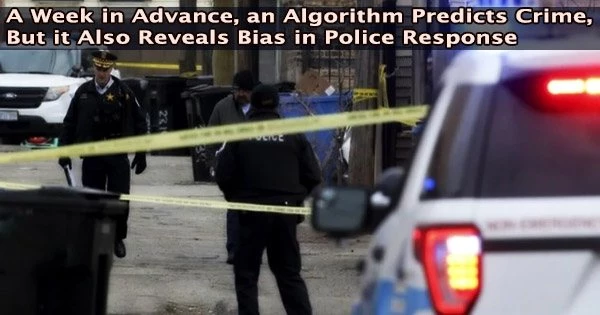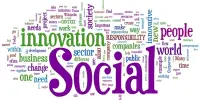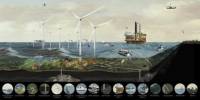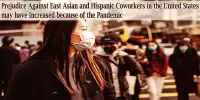Governments are interested in using advances in machine learning and artificial intelligence to employ these techniques for predictive policing to prevent crime. However, because they do not take into consideration structural biases in law enforcement and its complicated relationships with crime and society, early attempts at crime prediction have proven problematic.
The University of Chicago’s data and social scientists have created a new algorithm that predicts crime by identifying patterns in time and place from publicly available information on violent and property crimes. With roughly 90% accuracy, the program is able to forecast upcoming crimes one week in advance.
The research team also examined the police reaction to crime using a different model, counting the number of arrests made after incidents and contrasting those rates between areas of varying socioeconomic standing. They noticed that whereas crime led to fewer arrests in impoverished neighborhoods, it led to more arrests in wealthy regions. However, the fact that there weren’t more arrests in poor communities suggests that police enforcement and response are biased.
“What we’re seeing is that when you stress the system, it requires more resources to arrest more people in response to crime in a wealthy area and draws police resources away from lower socioeconomic status areas,” said Ishanu Chattopadhyay, PhD, Assistant Professor of Medicine at UChicago and senior author of the new study, which was published this week in Nature Human Behavior.
Utilizing historical data from the City of Chicago about two major categories of recorded events violent crimes (homicides, assaults, and battery) and property crimes the tool was tested and validated (burglaries, thefts, and motor vehicle thefts). Since there has historically been mistrust and a lack of cooperation with law enforcement in metropolitan areas, these data were utilized since they were more likely to be reported to the police in those locations.
We created a digital twin of urban environments. If you feed it data from happened in the past, it will tell you what’s going to happen in future. It’s not magical, there are limitations, but we validated it and it works really well.
Ishanu Chattopadhyay
Such crimes are also less prone to enforcement bias, as is the case with drug crimes, traffic stops, and other misdemeanor infractions.
In previous attempts to predict crime, an epidemic or seismic method was frequently used, in which crime is shown as emerging in “hotspots” and spreading to neighboring places. However, these methods ignore the intricate social fabric of cities and the link between criminal activity and the outcomes of law enforcement.
“Spatial models ignore the natural topology of the city,” said sociologist and co-author James Evans, PhD, Max Palevsky Professor at UChicago and the Santa Fe Institute. “Transportation networks respect streets, walkways, train and bus lines. Communication networks respect areas of similar socio-economic background. Our model enables discovery of these connections.”
The new algorithm separates crime by examining the time and location of discrete events and looking for trends to forecast subsequent occurrences. Instead of relying on conventional neighborhood or political boundaries, which are equally vulnerable to bias, it splits the city into spatial tiles that are around 1,000 feet across and predicts crime within these areas. The model performed just as well with data from seven other U.S. cities: Atlanta, Austin, Detroit, Los Angeles, Philadelphia, Portland, and San Francisco.
“We demonstrate the importance of discovering city-specific patterns for the prediction of reported crime, which generates a fresh view on neighborhoods in the city, allows us to ask novel questions, and lets us evaluate police action in new ways,” Evans said.
The accuracy of the tool, as Chattopadhyay is quick to point out, does not imply that it should be used to guide law enforcement, with police departments utilizing it to proactively swarm neighborhoods to deter crime. Instead, it ought to be included in a toolkit of policing and urban policy measures to combat crime.
“We created a digital twin of urban environments. If you feed it data from happened in the past, it will tell you what’s going to happen in future. It’s not magical, there are limitations, but we validated it and it works really well,” Chattopadhyay said.
“Now you can use this as a simulation tool to see what happens if crime goes up in one area of the city, or there is increased enforcement in another area. If you apply all these different variables, you can see how the systems evolves in response.”
The study, “Event-level Prediction of Urban Crime Reveals Signature of Enforcement Bias in U.S. Cities,” was supported by the Defense Advanced Research Projects Agency and the Neubauer Collegium for Culture and Society. Additional authors include Victor Rotaru, Yi Huang, and Timmy Li from the University of Chicago.
















